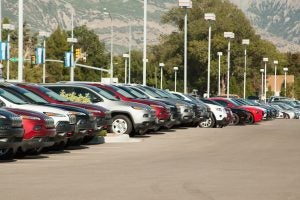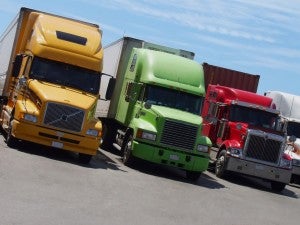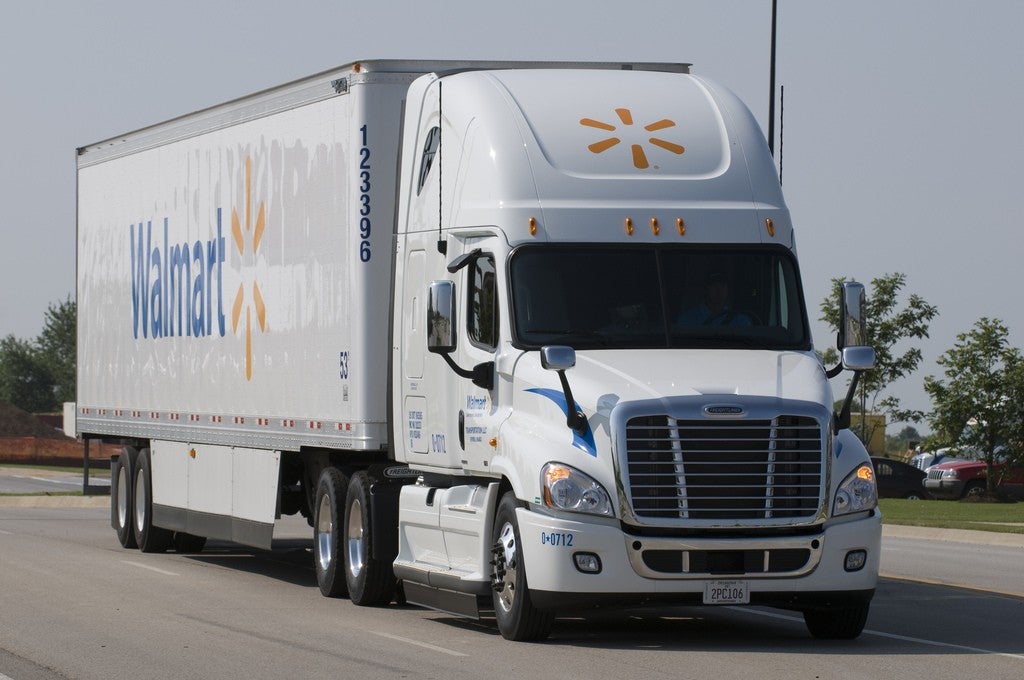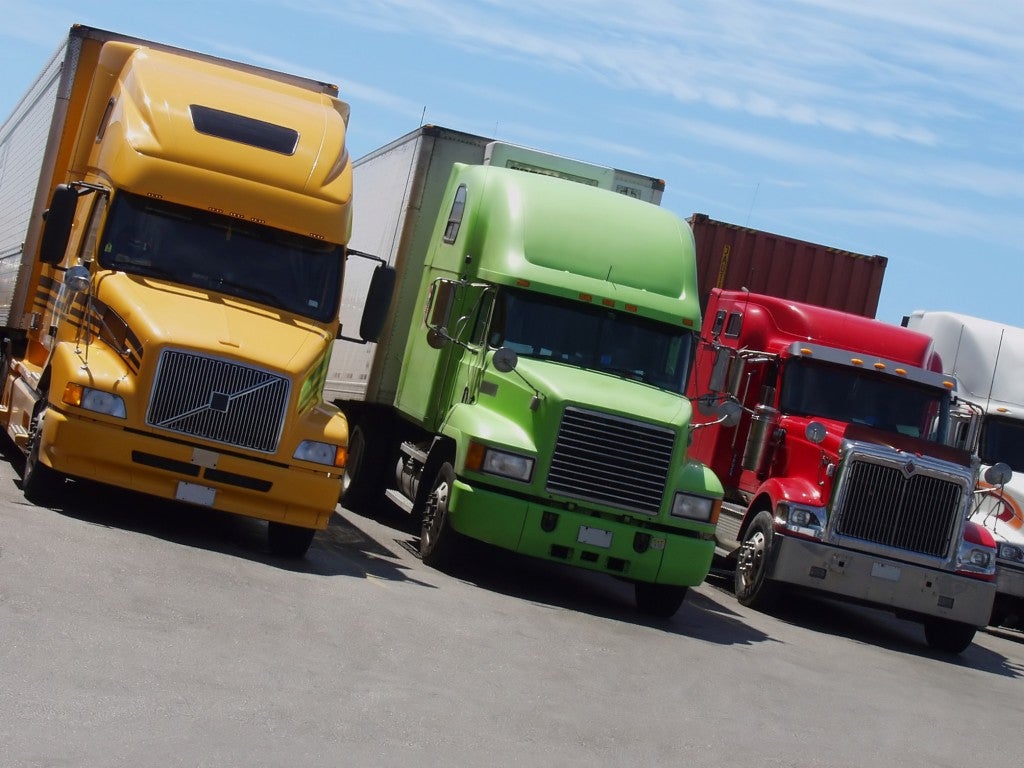New Clean Truck standards will arrive soon.
The U.S. Environmental Protection Agency (EPA) and the Department of Transportation (DOT) are expected to imminently finalize new greenhouse gas and fuel efficiency standards for medium-and heavy-duty trucks and buses. The standards will apply to the freight trucks that transport the products we buy every day, as well as to buses and school buses, tractor-trailers, heavy-duty pickup trucks and vans, and garbage trucks. (They are separate from standards for cars and passenger trucks.)
While the new standards have not yet been released, the overall support for improving our nation’s greenhouse gas and fuel economy standards is tremendously broad – including manufacturers, trucking fleets, national security experts, and others:
Manufacturers
“Daimler Trucks North America (DTNA) and its subsidiaries have focused for decades on improving freight efficiency in order to lower customers’ total operating costs. As the market leader in fuel efficiency, and the first to certify all of our products to Phase 1 GHG standards, DTNA shares EPA and NHTSA goals to improve fuel economy and reduce greenhouse gases.”
Greenhouse gas reduction standards for 2014 and 2017 “are very good examples of regulations that work well … We’re hoping for something similar with the next phase – challenging but good for everyone.”
- Martin Daum, President and CEO of Daimler Trucks North America
“Environmental care is a core value for the Volvo Group, and we are aligned with the federal government’s goal to reduce GHG emissions from heavy-duty trucks.”
“As a power management company committed to increased fuel efficiency and reduced greenhouse gases, Eaton strongly supports the next phase of standards for medium and heavy duty commercial vehicles.”
“Cummins supports the proposed Phase II rule and believes it will help our industry grow in a more sustainable way, which is a win for our customers and win for the environment.”
“Fuel is an enormous expense for our industry — and carbon emissions carry an enormous cost for our planet. That’s why our industry supported the Obama administration’s historic first round of greenhouse gas and fuel-efficiency standards for medium and large trucks and why we support the aims of this second round of standards.”
Fleets and Shippers
“Strong federal standards will create an incentive for truck manufacturers to innovate and develop more fuel-efficient vehicles, so the trucks coming on the road in the years ahead will use a lot less fuel than today’s vehicles .. Better fuel economy and higher efficiency help companies compete; less money spent on fuel means more to invest in products, processes, people and communities.”
- Indra K. Nooyi, Chairman and CEO of PepsiCo (in an op ed written with EDF president Fred Krupp)
“Our ability to access higher efficiency trucks is enhanced with well designed federal heavy truck fuel efficiency and greenhouse gas standards. We believe that the gains we have seen to date are just a hint of the engineering capabilities of this industry.”
“We support a strong Phase 2 rule that will drive innovation in truck technologies to viable solutions at a pace that ensures the technologies will have the intended triple bottom line outcomes without unintended consequences.”
- Tracy Rosser, Senior Vice President, Walmart
“Ben & Jerry’s is committed to reducing our carbon footprint across our entire business … Strong truck fuel standards will help us continue taking bites out of our carbon footprint.”
“Strong efficiency standards for heavy trucks will help our companies avoid billions of dollars in fuel costs and at the same time support the U.S. economy by keeping product transportation affordable and insulating freight costs from volatile global and regional crude oil prices.”
“Phase 1 has begun reducing U.S. oil consumption, cutting GHG emissions and producing fuel costs savings for fleets. Phase 2 should also drive GHG reductions and fuel savings while achieving important economic and energy security benefits.”
- Heavy-Duty Fuel Efficiency Leadership Group statement of principles, quoted in FedEx comments to the agencies (Companies in the Heavy-Duty Fuel Efficiency Leadership Group are PepsiCo, Cummins, Wabash, Waste Management, FedEx, Eaton and Conway)
“Strong fuel efficiency standards are good for American manufacturing because they incentivize innovation, making U.S. businesses more competitive globally. Investment in the research, production, and deployment of advanced vehicle technologies will give the United States an opportunity to lead in markets such as advanced batteries, which is growing quickly as technology costs have declined 50 percent since 2009.”
Innovators
“These proposed new efficiency standards will not just prove large trucks can be environmentally friendly, but they will lead to lower costs of goods and cheaper transportation costs to the benefit of businesses, truck owners and consumers, all while stimulating technological innovation and job creation, and protecting the health of Americans … It is important to note that the 40% reduction in fuel consumption and emissions in Class 6-8 vehicles proposed in the new rule is not something for the future. It is happening now. Parker has developed and is actively marketing a hydraulic hybrid medium- and heavy-duty vehicle transmission that is currently achieving and surpassing the 40% reduction in fuel consumption and emissions sought in the new rule.”
“Strong fuel efficiency standards are good for American manufacturing because they stimulate innovation, making U.S. businesses more competitive globally … Further investment in the research, production, and deployment of vehicle innovation will give the United States an opportunity to lead international markets as countries like China and Japan consider additional efficiency requirements for trucks … We urge U.S. Environmental Protection Agency and Department of Transportation to finalize strong phase two standards for medium- and heavy-duty trucks in 2016.”
“Clear, stringent, long-term fuel efficiency and greenhouse gas standards assist our companies and other solution providers by creating certainty that high-quality, effective innovations will be rewarded in the marketplace. To this end, we urge you to strengthen the proposed standards for Greenhouse Gas Emissions and Fuel Efficiency for Medium- and Heavy-Duty Engines and Vehicles.”
National Security Experts
“New fuel efficiency standards for medium- and heavy-duty vehicles … would increase investment in advanced technologies that will increase truck efficiency, advance our nation’s energy independence and advance national security on several fronts … The benefit to stretching a gallon of diesel to take our heavy-duty trucks father down the road on less fuel is clear. Reducing oil use improves our operational effectiveness, decreases the size and number of dangerous resupply convoys, better ensures delivery to point of need and will save American lives.”
“[T]echnologies developed to improve fuel efficiency for the U.S. trucking industry will likely also improve military operational effectiveness and save lives … To date, fuel economy standards for cars and trucks have proved to be powerful tools that have speeded innovation, decreased our dependence on oil and improved our nation’s overall security. The CNA MAB supports the next phase of rulemaking for medium and heavy-duty trucks as a matter of national security.”
“The United State’s near-exclusive dependence on oil to power transportation has routinely forced America’s military to protect oil supply lines around the globe. I am pleased to see that so many in the trucking industry support the proposed rule … Increasing the efficiency of a sector of the economy that is such a large and growing oil consumer will strengthen our national security, give our armed forces more flexibility and make our servicemen and women less likely to go into harm’s way.”
- General James T. Conway, former 34th Commandant of the U.S. Marine Corps and co-Chairman of SAFE’s Energy Security Leadership Council
“The Environmental Protection Agency’s proposal for regulating trucks will improve American energy security by reducing our dangerous oil dependence. Despite record levels of domestic production, America remains exposed to global oil market volatility, which recently reached levels last seen during the financial crisis. Meanwhile, violence throughout the Middle East threatens to rattle oil markets, damage our economy greatly and deepen our military involvement. The only means to reduce our exposure to such risks is to reduce our oil dependence, especially in transportation, which accounts for about three-quarters of total oil consumption.”
- Admiral Dennis Blair, former director of national intelligence and former commander in chief of the United States Pacific Command, and a member of the Energy Security Leadership Council at Securing America’s Future Energy
“We applaud the EPA for taking this additional step to reduce our dependence on fossil fuel and cut emissions that contribute to climate change. The national security community has long recognized the effects of climate change as ‘threat multipliers,’ which is why the military has led the way on investing in energy efficiency and clean sources of energy. It is encouraging to see the civilian transportation infrastructure of this country playing a role in that fight.”
Consumer, Labor and Environmental Groups – including EDF
“As the federal government takes another step forward in addressing the nation’s energy challenges, today’s proposal to increase big truck fuel economy will not only further reduce our dependence on foreign oil, but reduce the cost of everyday consumer purchases.”
“America’s economy depends on leadership in building the next generation of clean globally competitive energy and vehicle technology. These new standards can provide a critical opportunity to sustain jobs, further reduce the pollution driving climate change and foreign oil dependence while enhancing the competitiveness of U.S.-manufactured trucks in global markets.”
“The proposed Clean Truck standards will move us miles down the road toward a cleaner, safer future. The standards will sharply reduce climate pollution from the transportation sector and will reduce America’s reliance on imported oil.”
- Fred Krupp, president of Environmental Defense Fund
 The past couple of weeks have seen a whirlwind of announcements related to the U.S. auto industry.
The past couple of weeks have seen a whirlwind of announcements related to the U.S. auto industry.









 Our nation is making great progress in reducing the environmental impact of trucking.
Our nation is making great progress in reducing the environmental impact of trucking.
